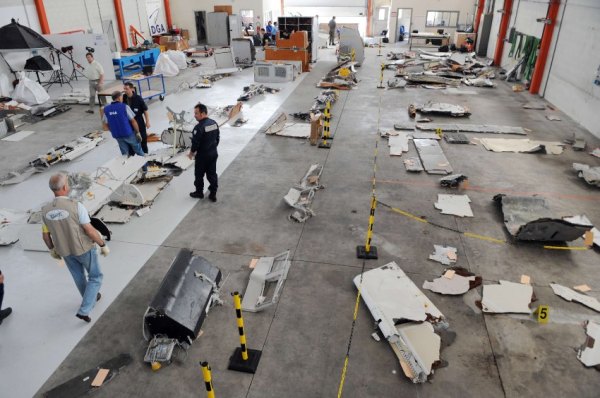
Some gravely serious allegations about the conduct of Air France flight AF447, which crashed in the middle of the Atlantic killing all 228 people on board last June 1, have been published in the German magazine Der Spiegel.
Titled ‘Head Crash in the Cockpit’, or more colloquially, a stroke, Gehirnschag im Cockpit doesn’t seem to have made it into an English or French newspaper so far.
With the help of a fluent German speaker, this is a quick summary of the article, which would explain something that Plane Talking began drawing attention to here and in Crikey since last October.
That is, why did the flight appear to fly as straight as an arrow into towering thunderstorms when all around it flights diverted, and was its weather radar working?
And why was the French accident investigation showing hints of turning feral in relation to the slowness of Airbus to react to a known problem with ice prone external measuring devices called pitots on the A330, yet tip-toeing around around the issue of direct flight into violent storms, while saying, categorically, that the pitots were a factor but not the prime cause?

In summary, the German article, which quotes sources in the Air France pilot’s union, among others, says that AF 447 was overloaded prior to departure from Rio de Janeiro to Paris late on the night of May 31. Specifically, that it came in at 237,757 kgs, or a mere 243 kgs below maximum takeoff weight or the flight before another ten tonnes of freight was loaded.
It alleges the pilots then pulled the trick of filing a flight plan to Bordeaux, a slightly nearer destination that was ‘legit’ for the load, and declared Paris as the alternate or diversionary airport.
After which they decided to fly unflinchingly in a straight line regardless of the conditions, which if true, is a very uncomfortable illustration of the claims often heard about a new generation of career orientated pilots who will bend the fuel rules for their airlines, eroding flight safety standards in the process.
The sort of thinking that could put an air ambulance into the sea near Norfolk Island at night, perhaps?
Anyhow, after the reader recovers from the surprise of pilots digging a hole like this for themselves in Der Spiegel, they run into the known problem of pitots, the external speed measuring devices that inform the computer ‘brains’ of all modern jets as to what the airspeed and air pressure really is on the outside, getting clogged with ice. Or in German, a case of the speed indications or geschwindigkeits going kaput.
Der Spiegel’s sources claim that nine such incidents occurred in the same year. They also claim, incredibly, that Air France had neglected to train in pilots in a simulator to handle the situation, which is described as so violent that often the eye can’t even focus on the flight manual, let alone find the relevant part of it in such a crisis.
It then points out that it has discovered that Airbus had also taken out a US patent on an invention to bypass the problems of faulty pitots, which it had acknowledged in its application as causing ‘errors in speed readings that could have catastrophic consequences.’
The article concludes with the claim that Airbus does have a little device that A330 operators can fit which in the case of unreliable speed indicators like those that seemed to plague the jet would indicate to pilots exactly what attitude they should hold the jet at under the particular circumstances encountered at the onset of failure, and until the ice was melted away by the heating elements in the pitot. This device, called Buss, cost about half a million dollars per jet, and had been turned down by Air France.
Der Spiegel basically holds the leading editorial franchise for bashing Airbus in Europe, and would disappoint many of its readers if it didn’t run a scathing indictment of the company or its wicked and evil parent EADS at least once every season. Those rants are usually full of obvious nonsense. The problem with Gehirnschlag im Cockpit is that only some parts of it have to be true for Air France to be in very serious trouble.







Crikey is committed to hosting lively discussions. Help us keep the conversation useful, interesting and welcoming. We aim to publish comments quickly in the interest of promoting robust conversation, but we’re a small team and we deploy filters to protect against legal risk. Occasionally your comment may be held up while we review, but we’re working as fast as we can to keep the conversation rolling.
The Crikey comment section is members-only content. Please subscribe to leave a comment.
The Crikey comment section is members-only content. Please login to leave a comment.